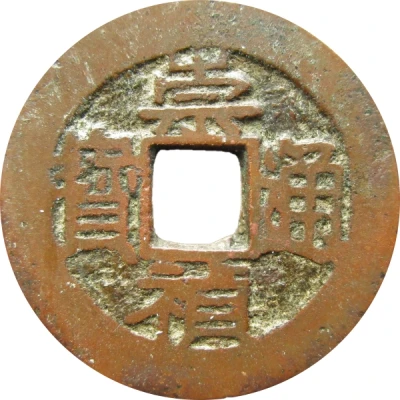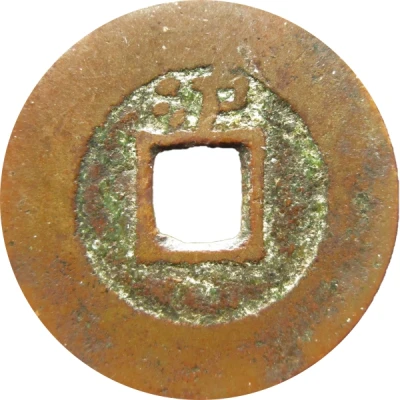1 Cash - Chongzhen Tongbao; northern type; Jia - type 2; with dot ND
| Brass | - | 24 mm |
| Issuer | Empire of China |
|---|---|
| Emperor | Ming dynasty › Chongzhen (崇祯帝) (1627-1644) |
| Type | Standard circulation coin |
| Years | 1630-1644 |
| Value | 1 Cash |
| Currency | Cash (621-1912) |
| Composition | Brass |
| Diameter | 24 mm |
| Shape | Round with a square hole |
| Technique | Cast |
| Orientation | Medal alignment ↑↑ |
| Demonetized | Yes |
| Updated | 2024-10-03 |
| Numista | N#222612 |
|---|---|
| Rarity index | 100% |
Reverse
One Chinese ideogram below and dot above.
Script: Chinese (traditional, regular script)
Lettering: 加
Translation:
Jia
Jiazhou (mint)
Edge
Plain
Comment
Hartill suggests the larger, heavier coins (around 26 millimetres and weighing 1.3 Qian) were the first 1 Cash pieces produced. By 1630, coins minted in the north weighted 1.0 Qian and coins minted in the south weighed 8 Fen or less.The Northern types and the Southern types are differenciated by the left part of Zhen.
- Northern types: 礻
- Southern types: 示
Interesting fact
One interesting fact about the Standard circulation coin 1 Cash - Chongzhen (Tongbao; northern type; Jia - type 2; with dot) ND (1630-1644) from Empire of China made of Brass is that it was used as a form of currency during the Chongzhen era of the Ming dynasty, which was a time of great economic and cultural growth in China. The coin's design features a square hole in the center, which was used to string together multiple coins for ease of use in trade and commerce. Additionally, the coin's brass composition was a common material used for currency during this time period, as it was durable and resistant to corrosion.

